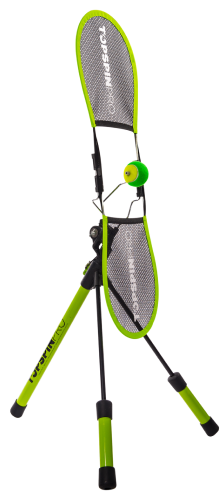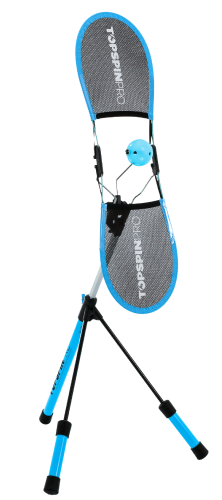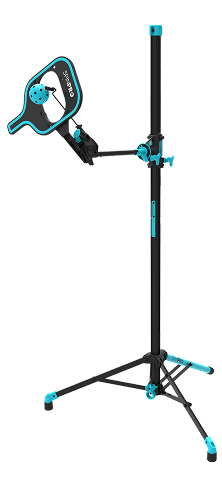Learning a new skill in tennis is exciting, but translating that skill into match play is where many players hit a wall. This guide walks you through the ideal progression: from the very first steps of learning a technique, all the way to using it with confidence in competitive play. If you follow this route it will maximize the speed of your progress.
Why Use Progressions?
It might sound obvious, but why use progressions instead of jumping straight into practicing a new skill in a competitive setting?
There are several important reasons why a step-by-step approach leads to better results:
- Volume of Practice - Isolating a skill or practice scenario allows you to get in high-quality, high-volume reps, a key ingredient for building reliable muscle memory. The more focused repetition you get, the faster your technique becomes automatic under pressure.
- Correct Technique - Under pressure, we often default to poor mechanics just to stay in the point. But if your goal is to improve a skill, it’s essential to remove that pressure during training. By creating a controlled environment, you give yourself the freedom to focus on proper technique, without the distraction of winning or losing the rally. That’s where real progress happens.
- Shot Quality Awareness - When we isolate a skill and focus on it in a controlled environment, we’re better able to assess whether we’re using the correct technique. During live rallies or match play, our attention naturally shifts to outcomes like whether the shot landed in or won the point, rather than the quality of the execution. Isolating the skill allows us to stay focused on form, contact, and intention, the things that lead to long-term improvement.
So lets look at the fastest way to progress through the stages of learning and how to master a shot in the shortest amount of time:
1. Pick One Thing
“Rather than trying to learn multiple aspects simultaneously, isolate the specific element you want to improve. This targeted focus allows for more effective neural adaptations.”
— Dr. Andrew Huberman
This is one of the most common mistakes I see players make during practice. They try to fix too many things at once, maybe tweaking their backhand, improving footwork, and working on positioning all in the same session. Or they combine technique with tactics, like trying to fix their forehand while practicing approach shots. It’s simply too much for the brain to process efficiently.
The truth is that the brain thrives on clarity and repetition. When you isolate a single element, whether it’s your grip, your contact point, or your footwork pattern, you give your nervous system the opportunity to form deep lasting neural connections. That’s how real progress happens.
Trying to work on multiple skills at once actually dilutes your focus and slows learning. Instead, zoom in on one specific thing and repeat it until it becomes automatic. Only then should you layer on complexity or move to the next area.
So.....pick one thing and master it!
2. Understand the Correct Technique
Before you even pick up your racket, take a moment to understand the skill you’re about to learn. Whether it’s a topspin forehand, a slice backhand, or a kick serve, start by watching slow-motion videos of top-level players executing that shot. This helps you build a clear mental image of what “good” looks like which is an essential first step in effective learning.
Break Down The Action:
You can also watch coaching demonstrations that break the movement down into teachable parts. Make sure you understand the key fundamentals of what you are trying to improve such as grip, stance, and swing path. Rather than working on improving your shot as a whole, figure out which part of the shot needs improving. It could be that your contact point is late, your backswing is too big or that you are using the wrong grip. Video analysis is your best friend here because it helps you work out what needs improving!
For a more in depth guide about video analysis check out this article: Analyze Your Tennis With Video For Dramatic Improvement
Below is an example of how to choose the correct forehand grip:

3. Isolate The Skill
Once you understand the movement, isolate it from the rest of your game. The best way to do this is with a static ball or no ball (shadow swings). Tools like the TopspinPro can really help you isolate the skill. You can practice your spacing, contact point and correct swing shape. Try to break the swing down so you are really isolating the skill as much as possible. Repetition is key. Build muscle memory slowly and deliberately. It’s important to master this phase before moving on to the next.
Below is an example video of how to isolate different sections of the kick serve:
![TopspinPro | The Kick Serve Explained & 7 simple progressions to follow [RIGHT-HANDED]](https://i.ytimg.com/vi/80xbUq_y700/maxresdefault.jpg)
4. Drop Feed Drills
Once muscle memory begins to develop and the motion feels more natural, it’s time to progress to hitting the shot using a drop feed. This involves simply dropping the ball in front of your body and executing the stroke. While drop feeds aren’t suitable for every shot (like serves or overheads), they’re highly effective for groundstrokes.
This stage is essential for refining your contact point, swing timing, and rhythm, without the added complexity of a moving ball. It allows you to groove the technique in a controlled environment before advancing to more challenging feeds and live rallies.
Below is an example of a drop feed drill:
5. Moving Ball Drills
Even this stage of learning has its own progression. To build consistency and confidence, gradually move from easier feeds to more challenging ones. Here’s how to structure it:
- Easy Feed – Toss the ball directly to the player with minimal movement required. Keep the pace slow and predictable to help them focus on clean contact and timing.
- Moderate Feed – Toss the ball slightly to the left or right, encouraging the player to move their feet and adjust positioning while maintaining technique.
- Challenging Feed – Vary the height, depth, and speed of the feed. This forces the player to adapt their timing, spacing, and footwork—just like in a real match.
- Drill-Based Feed – Progress to structured drills that add pressure and game-like intensity. This helps reinforce the technique in a more dynamic and realistic setting.
6. Rallies
Progress from moving ball feeds to rallies. This is the most difficult progression of all because now the ball flight will become harder to read and prepare for.
Start with easier rallies, you can even use compression junior balls to keep the rallies slower.
- Easy Rallies - This could be gentle rallies from the service line with a progression back towards the baseline. Keep the rallies in the middle of the court for this phase.
- Directional Rallies - Add in some intentional direction. This could be half court straight line or cross court rallies. You can also try rallying in the allies to make it more difficult.
- Target Rallies - Using targets is a great way to increase pressure and raise the difficulty. You can make it competitive to simulate the pressure of matchplay.
7. Practice Points
Now it’s time to test your skill in a more realistic setting. Transition from isolated practice to point-play scenarios that challenge your ability to apply the skill under pressure.
To maximize reps and focus, consider removing the serve (unless you’re specifically working on it). Starting points with a forehand feed, for example, allows for a higher volume of quality shots and focused repetition.
Here are some effective ways to structure this stage:
- Conditioned Point Play – Create rules that require the use of the skill you’re working on.
- Shot Count Rules – Play points where a set number of shots must be hit before the point can be won. This encourages consistency and shot discipline
- Add Scoring Pressure – Use game scoring to simulate match tension and practice performing under pressure.
This stage is essential for bridging the gap between structured drills and live match play, helping you build confidence and decision-making around your newly developed skill.
8. Matchplay
Finally, it’s time to take your new skill into full match play. But don’t expect perfection right away, this stage is about application, not flawless execution.
- Pick Your Moments - Choose specific situations during the match to apply the skill, rather than trying to use it on every point.
- Reflect Post-Match - Ask yourself: What worked? What felt off? When did I feel most confident using it?
- Track Your Progress - Keep notes after each session to monitor improvements and identify patterns.
Remember: Confidence comes from repetition, especially under pressure. The more often you apply the skill in real match scenarios, the more naturally it will become part of your game.
TOPSPINPRO BEGINNER COURSES
We use the latest science and progressions in our TopspinPro Online Courses. Check them out for some in-depth help with developing your shots:

Conclusion
Learning isn’t linear. If the skill breaks down in match play or any other stage go back a step or two:
- Go back to shadow swings
- Revisit drills
- Use tools like video analysis to troubleshoot
Improving at tennis doesn’t just mean hitting more balls. It’s about practicing smarter and giving yourself a path from learning to performing. By following this progression, you’ll not only master new skills you’ll be able to play with real confidence when it counts most.
FAQs
-
Why is a step-by-step approach important when learning a new tennis skill?
A step-by-step approach allows for high-quality, high-volume practice, which is crucial for building reliable muscle memory. It helps focus on correct technique without the pressure of competition, ensuring long-term improvement by concentrating on form and intention rather than just outcomes.
-
What is the first step in mastering a new tennis shot?
The first step is understanding the correct technique, which involves learning the grip, stance, and swing path. Watching slow-motion videos of top players and coaching demonstrations can help build a visual understanding of the skill.
-
How does isolating a skill help in the learning process?
Isolating a skill allows for focused practice on specific movements without the distractions of a full game. It helps build muscle memory and ensures that you master the technique before moving on to more complex stages of learning.
-
What is the purpose of using drop feed drills in tennis practice?
Drop feed drills help develop muscle memory by focusing on the contact point and timing of the swing. It’s a crucial stage for transitioning from isolated skill practice to hitting the ball with consistency before tackling more challenging feeds.
-
How can players ensure continued progress if a skill breaks down during match play?
If a skill breaks down, players should loop back to previous stages like shadow swings or specific drills. Using tools such as video analysis can help troubleshoot and refine techniques, allowing for smarter practice and enhanced performance.
Enjoyed this article?
Be sure to sign up for our newsletter and we'll keep you up to date about new posts



